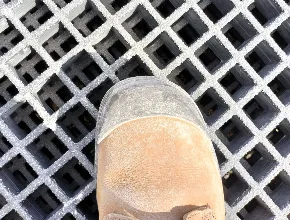loading...
- No. 9, Xingyuan South Street, Dongwaihuan Road, Zaoqiang County, Hengshui, Hebei, China
- admin@zjcomposites.com
- +86 15097380338
- Welcome to visit our website!
Advantages and Applications of FRP Structural Profiles in Modern Engineering
Understanding FRP Structural Profiles A Modern Solution for Construction
Fiber Reinforced Plastic (FRP) structural profiles are becoming increasingly popular in the construction industry due to their advantageous properties compared to traditional materials like steel and concrete. In this article, we will explore what FRP structural profiles are, their benefits, applications, and considerations for their use in modern construction.
What are FRP Structural Profiles?
FRP structural profiles are composite materials made from a polymer matrix reinforced with fibers—typically glass, carbon, or aramid. This combination results in a highly durable, lightweight, and corrosion-resistant material suitable for a variety of structural applications. The unique properties of FRP profiles make them ideal for projects where traditional materials may falter due to environmental challenges or weight constraints.
Benefits of FRP Structural Profiles
1. Corrosion Resistance One of the most compelling advantages of FRP is its exceptional resistance to corrosion. Unlike steel, which can rust when exposed to moisture and chemicals, FRP profiles do not corrode, making them ideal for use in harsh environments like chemical plants, marine applications, and areas with high humidity.
2. Low Weight FRP profiles are significantly lighter than steel and concrete. This property not only reduces the overall load on structures but also decreases transportation and installation costs. Lighter materials ease the movement and handling during construction, allowing for faster assembly and reduced labor costs.
3. High Strength-to-Weight Ratio Despite being lightweight, FRP materials possess a remarkable strength-to-weight ratio. This means that they can support heavy loads without the bulk typically associated with traditional materials. This characteristic makes FRP profiles suitable for applications in which space is limited or aesthetics are a priority.
4. Design Flexibility FRP can be molded into various shapes and sizes, allowing for innovative designs and applications. This flexibility enables architects and engineers to explore creative solutions that enhance both functionality and aesthetics in their projects.
5. Thermal and Electrical Insulation FRP materials are poor conductors of heat and electricity, making them ideal for specialized applications in electrical environments or thermal insulation settings.
6. Sustainability With growing concerns regarding environmental impact, FRP profiles offer a sustainable alternative. They can be produced with recyclable thermosetting resins, and their long service life reduces the need for regular replacement, minimizing waste.
frp structural profiles

Applications of FRP Structural Profiles
FRP structural profiles are employed in a wide array of applications across various industries
- Infrastructure In bridges, roadways, and railways, FRP is used to enhance structural integrity while minimizing weight. It is particularly beneficial in regions prone to corrosion due to environmental conditions.
- Marine Structures The marine industry extensively uses FRP products for boat hulls, docks, and other structures due to their resistance to saltwater and marine organisms.
- Building Construction FRP is increasingly utilized in building frames, facades, and roofing systems, especially in environments where moisture and chemicals are present.
- Wind Turbines The renewables sector benefits from FRP in constructing lighter and more efficient turbine blades, leading to better energy generation efficiency.
Considerations for Use
While FRP structural profiles offer numerous benefits, there are considerations to keep in mind. Their production can be more costly than traditional materials, which may be a drawback for some projects. Furthermore, FRP can have a lower modulus of elasticity compared to steel, which necessitates careful design to ensure structural integrity.
Moreover, the non-ductile behavior of FRP materials means they do not undergo plastic deformation like steel, which could be a limiting factor in certain applications, especially in seismic zones. Engineers must also be mindful of the fire resistance characteristics of FRP, as they can behave differently compared to traditional materials in high-temperature situations.
Conclusion
FRP structural profiles present a modern solution in construction, offering numerous advantages such as corrosion resistance, low weight, and design flexibility. As technology advances and the demand for sustainable and innovative construction materials continues to rise, FRP is likely to play an increasingly prominent role in the future of architecture and engineering. Adopting this material, with an informed understanding of its characteristics and potential challenges, could lead to groundbreaking advancements in how structures are conceived and built.
-
The Rise of FRP Profiles: Strong, Lightweight, and Built to LastNewsJul.14,2025
-
SMC Panel Tanks: A Modern Water Storage Solution for All EnvironmentsNewsJul.14,2025
-
GRP Grating: A Modern Solution for Safe and Durable Access SystemsNewsJul.14,2025
-
Galvanized Steel Water Tanks: Durable, Reliable, and Ready for UseNewsJul.14,2025
-
FRP Mini Mesh Grating: The Safer, Smarter Flooring SolutionNewsJul.14,2025
-
Exploring FRP Vessels: Durable Solutions for Modern Fluid HandlingNewsJul.14,2025
-
GRP Structures: The Future of Lightweight, High-Performance EngineeringNewsJun.20,2025
